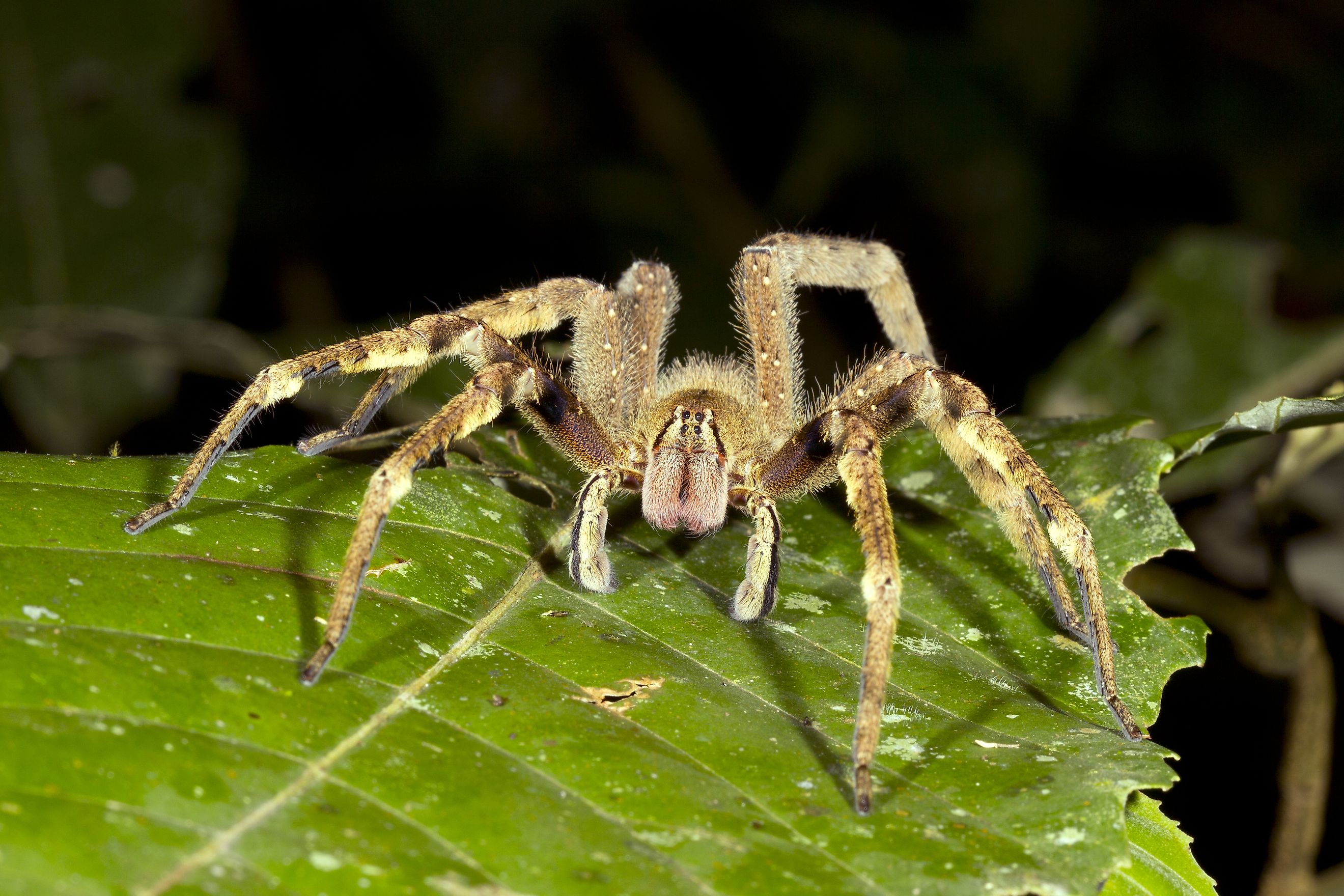
Top 11 Largest Spiders in the World
Spiders are a type of arachnid, as are mites, ticks, and scorpions. The creatures vary in size, from as small as a couple of millimeters to as large as 11 inches in leg span. Despite there being a plethora of different spiders, they have a similar appearance: an unsegmented body, and four pairs of legs, and they typically have eight eyes, though some may have six or fewer.
Spiders also have organs for producing silk—in other words, the material from which they make nests, webs, or cocoons. Spiders trap and immobilize prey (often smaller insects) with the silk, inject them with paralyzing venom, and then with a predigestive liquid. Finally, spiders suck the nutrients out of and consume their prey.
There are over 50,000 different spiders in the world, scattered all over different ecosystems and environments. Some live on the water, while others live in forests or the desert. The world's largest spiders vary in leg span and body mass. No matter whether one is an arachnophobe or arachnophile, the creatures are sure to inspire a little awe.
Goliath Bird-eating Tarantula (Theraphosa blondi)
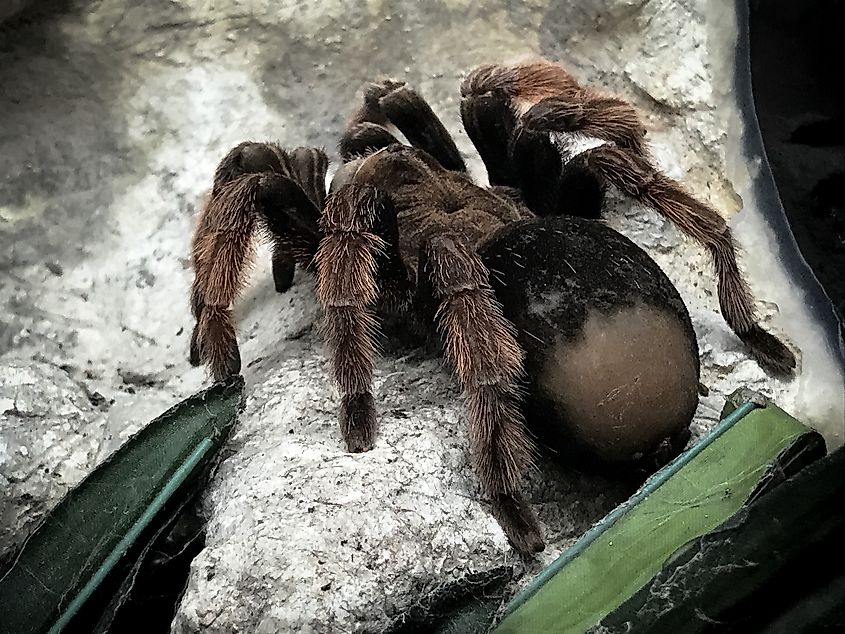
Close-up of a Goliath bird-eating tarantula, the largest tarantula species.
Goliath Bird-eating Tarantula (Theraphosa blondi), the biggest tarantulas in the world, live deep in the rainforests of South America, namely Venezuela, northern Brazil, Guyana, French Guiana, and Suriname. They have a deep brown or black coloring, two fangs, and chelicerae and pedipalps (additional appendages) near the mouth that act as fangs and claws and expel venom. The body of a Goliath Bird-eating Tarantula measures up to 4.75 inches, while the leg span reaches 11 inches. The tarantula weighs up to 6 ounces.
The male spiders typically live for three to six years, while females may survive up to 20 years. The creatures protect themselves by making a loud hissing noise or releasing sharp hairs into attackers, and make a meal out of smaller insects and animals, such as birds, mice, frogs, and lizards.
Giant Huntsman Spider (Heteropoda maxima)
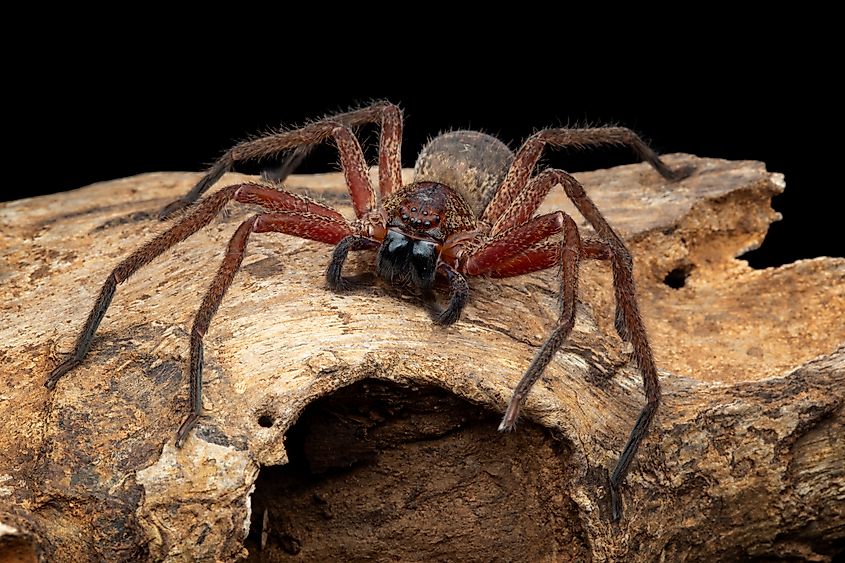
Close-up of Huntsman spiders on wood, Indonesian spiders.
The Giant Huntsman Spider (Heteropoda maxima) is only currently known to reside in certain limestone caves within Laos in Asia. The spiders are typically yellow-brown in color, with large black spots scattered irregularly on the back half of the body and dark bands on the legs.
The size of the Giant Huntsman Spider mirrors the leg span of the Goliath Birdeater Tarantula, reaching 12 inches. They typically have a 1.8-inch long body, weighing about 2.6 ounces because of the smaller body when compared to the Goliath Birdeater. However, females typically have larger bodies, while males have longer legs. Birds and small rodents or reptiles sustain the spiders for up to two years.
Brazilian Salmon Pink Birdeater (Lasiodora parahybana)
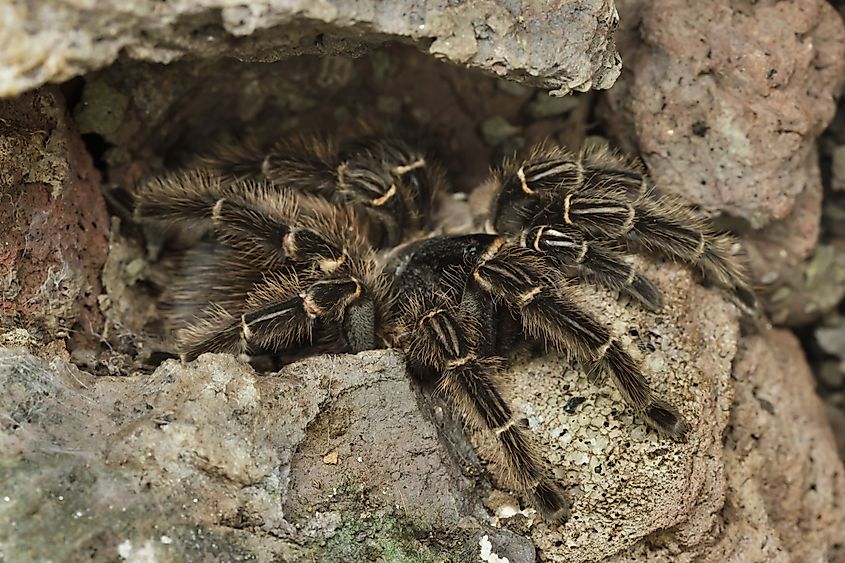
Brazilian salmon pink bird-eating tarantula (Lasiodora parahybana).
The Brazilian Salmon Pink Birdeater (Lasiodora parahybana) is the world's third largest spider, reaching a maximum size of 11 inches, though they typically grow to be 7 to 10 inches and weigh 3.5 ounces. They live in the tropical forests of eastern Brazil, with a velvety black abdomen and salmon-colored hairs from which they get their name.
The Brazilian Salmon Pink Birdeater reaches adult size in just two years. Male spiders live up to five years, while females have a lifespan of 15 years. They have self-protective urticating (prickly or stinging) hairs that cause itching or swelling. Brazilian Salmon Pink Birdeater spiders typically eat large insects or small amphibians or reptiles.
Chaco Golden-knee Tarantula (Grammostola pulchripes)
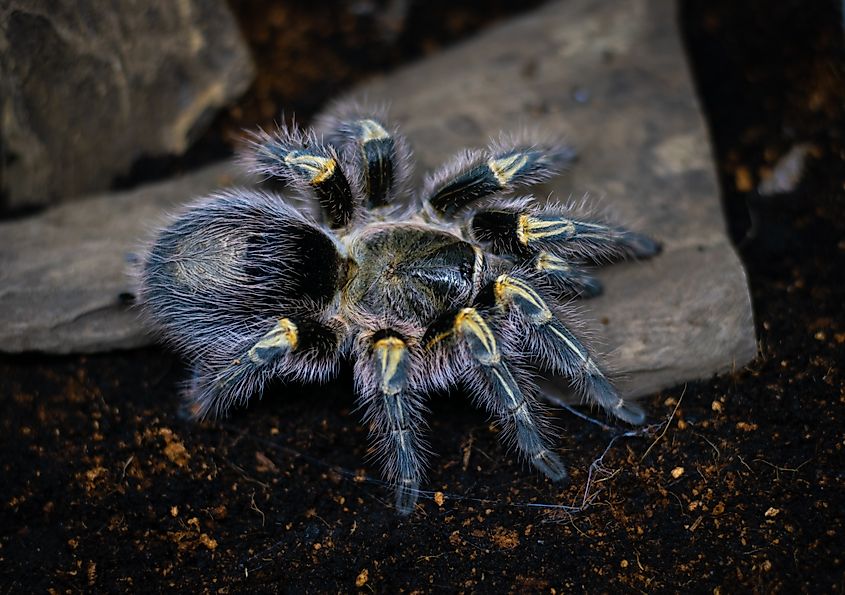
Chaco Golden Knee Tarantula (Grammostola pulchripes).
The Chaco Golden-knee Tarantula (Grammostola pulchripes) finds its home in Paraguay or Argentina, enjoying the more subtropical regions. The tarantula is known to reach between 7 to 8.5 inches in leg span. The spiders have mainly black bodies with golden stripes around the legs and pink hairs on the body. Like the Giant Huntsman Spider, males have smaller bodies and longer legs, while females have larger bodies. Also, males often live between five and seven years, while females live around 20 years. To defend itself, the spider may use its urticating hairs or burrow underground.
Face-Sized Tarantula (Poecilotheria rajaei)
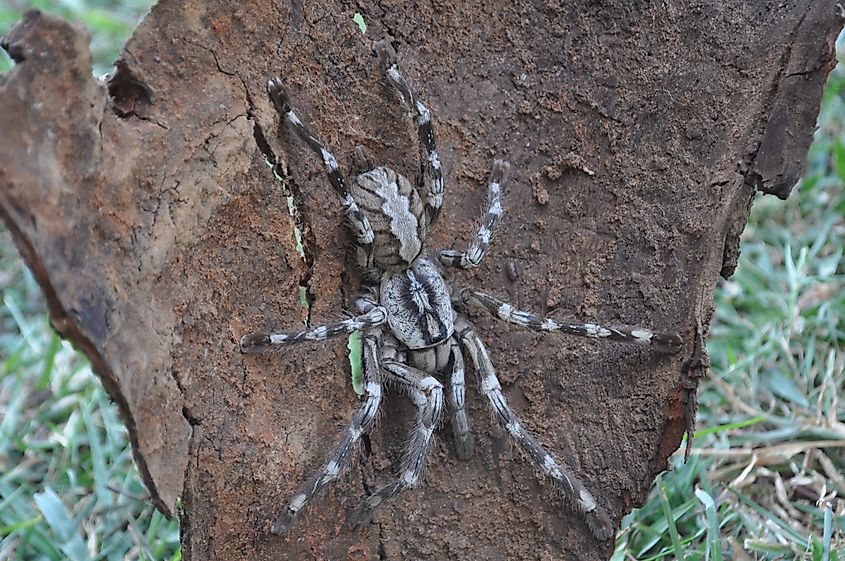
Tarantula: Poecilotheria rajaei. By Ranil Nanayakkara, CC BY 3.0, Wikimedia Commons
The Face-Sized Tarantula (Poecilotheria rajaei) is native to Sri Lanka and India, where it resides in the trees. It is a more recent discovery, as a dead specimen was found in 2009. The spiders are yellow, pink, and gray in color, with unique striping and piping that helps them camouflage in the wilderness. As they are quite rare and live in an area that suffers from deforestation, there is still much to discover about the tarantulas, but they boast a leg span of 8 inches—in other words, they are the size of a human face—and they eat small rodents, birds, lizards, and snakes.
King Baboon Spider (Pelinobius muticus)
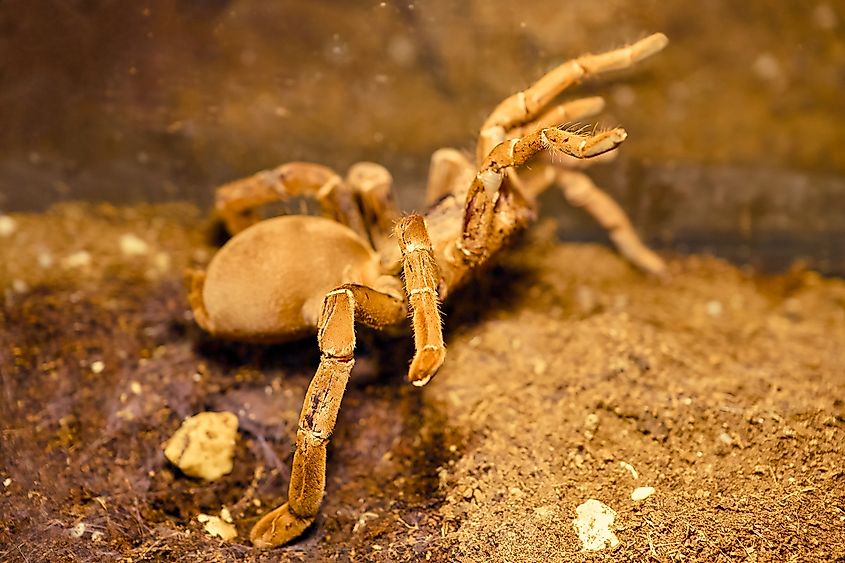
The King Baboon Spider (Pelinobius muticus) is an East African spider that lives in the shrublands and grasslands and is a dark reddish brown color. The spiders have urticating hairs, as well as stridulatory hairs, which rub together to create a whistling sound, acting as a defense mechanism. They are similar in size to the Face-Size Tarantula, reaching about 8 inches in leg span. The spiders typically burrow rather than create webs, using their silk near the entrance of their burrow to detect prey, such as beetles and cockroaches, through vibrations from motion. King Baboon Spiders live to be about 20 years.
Colombian Giant Tarantula (Megaphobema robustum)
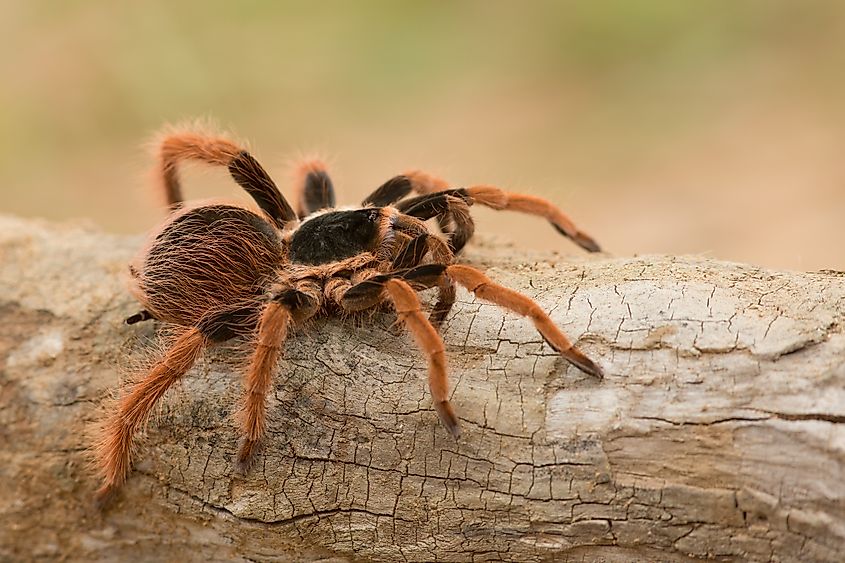
Colombian giant tarantula (Megaphobema robustum).
The Colombian Giant Tarantula (Megaphobema robustum) is another spider typically found in the tropical rainforests of Brazil and Colombia with a leg span of 6 to 8 inches. The tarantulas have a deep black coloring on their body and legs with bright orange hairs. They feed on large insects, small lizards, and mice. Like many other spiders, males live to be about four or five years, while female spiders live to be around 20 years. The Colombian Giant Tarantula is a bit more timid than others, typically burrowing or fleeing at a threat.
Brazilian Wandering Spider (Phoneutria fera)
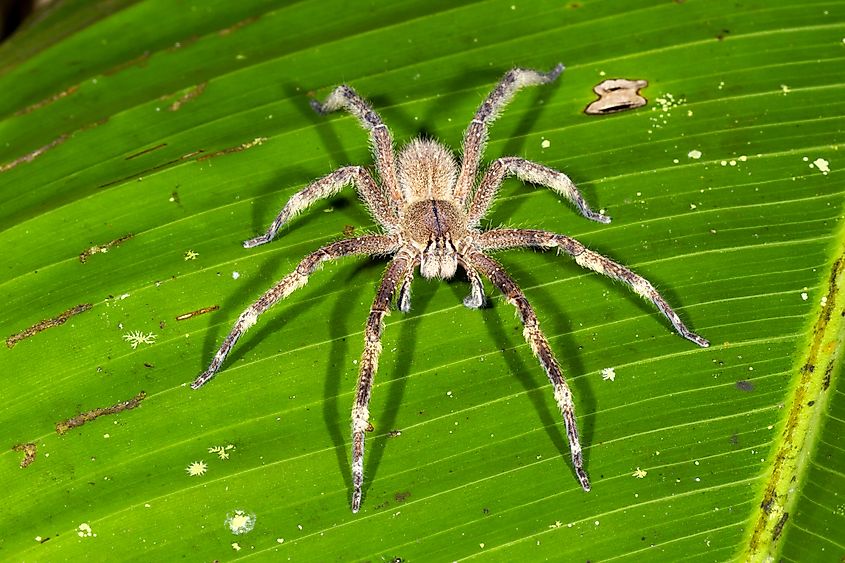
The Brazilian Wandering Spider (Phoneutria fera) or banana spider is one of the most venomous and deadliest spiders in the world—it makes sense that Phoneutria means "murderess" in Greek. The spider lives in Central and South America, from Costa Rica to Argentina. Their bodies reach about 2 inches in length, while the leg span reaches 7 inches. They are covered in small hairs with a gray/brown coloring and lightly colored spots on the abdomen.
Rather than building webs, they crawl on the forest floor and kill prey with a neurotoxic venom. They prey on flies, beetles, butterflies, moths, grasshoppers, locusts, and crickets and typically only bite larger animals in self-defense. Unlike many of the other world's largest spiders which have long lifespans, the Brazilian Wandering Spider only lives for about one year.
Brazilian Giant Tawny Red Tarantula (Grammostola anthracina)
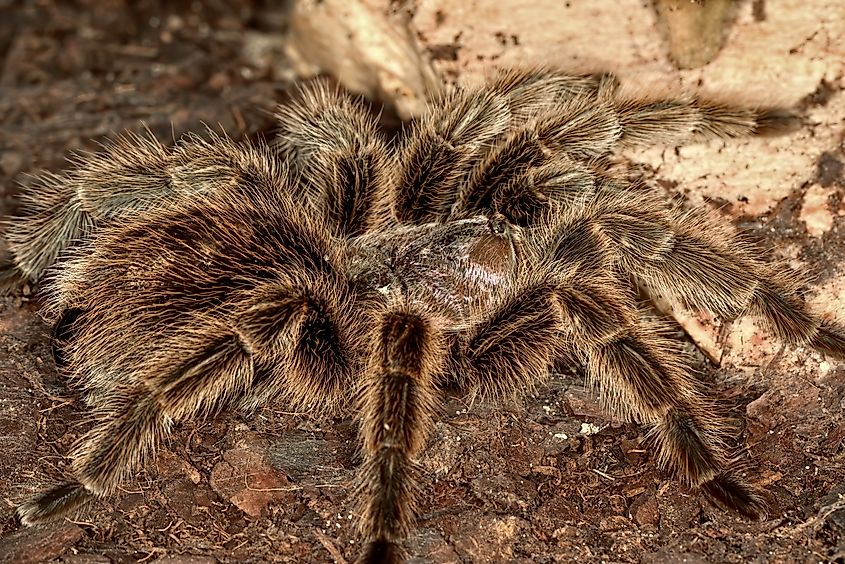
Grammostola anthracina spider on the ground.
Found in Uruguay, Paraguay, Brazil, and Argentina, the Brazilian Giant Tawny Red Tarantula (Grammostola anthracina) has an entirely brown body. Like the King Baboon Spider, the Brazilian Giant Tawny Red Tarantula uses stridulatory hairs as a defense mechanism. They grow between 5.5 and 6 inches and weigh about 6 ounces.
The Brazilian Giant Tawny Red Tarantula feeds on insects or small rodents, amphibians, and reptiles. The spiders are also said to have one of the longest lifespans of spiders, with reports of them surviving over 20 years.
Camel Spider (Solifugae)
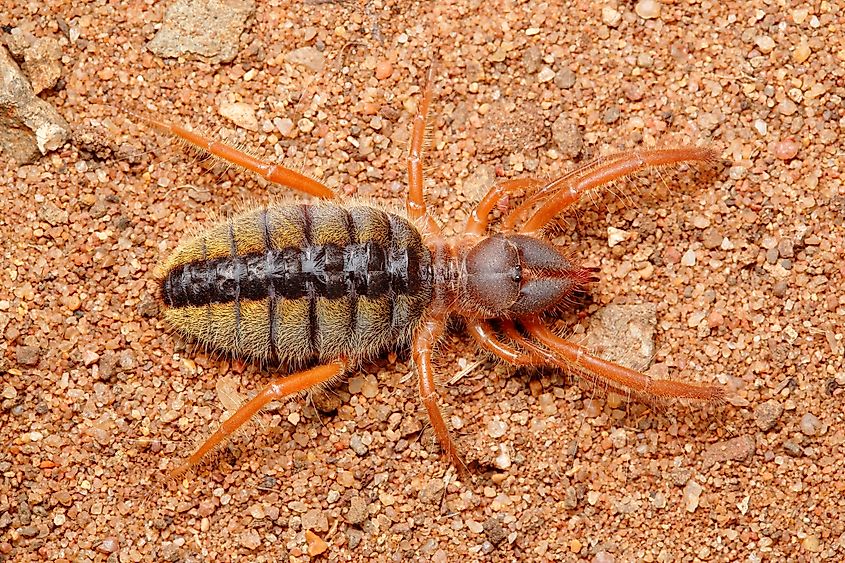
Camel spider (Solpugema) from Ndumo Game Reserve, South Africa.
Camel Spiders (Solifugae) are also known as wind scorpions, sun spiders, or solifuges. The creatures live in dry climates such as the southwestern United States, the Middle East, Mexico, and South Africa. They are not true spiders, sitting somewhere between spiders and scorpions. They are tan or dark brown in color and covered in fine hairs, helping them blend in and protecting them from heat. Reaching 5 to 6 inches in size, they generally feed on termites, beetles, rodents, snakes, lizards, and birds. Like the Brazilian Wandering Spider, the Camel Spider has a lifespan of one year.
Sand-dwelling Huntsman Spider (Cerbalus Aravaensis)
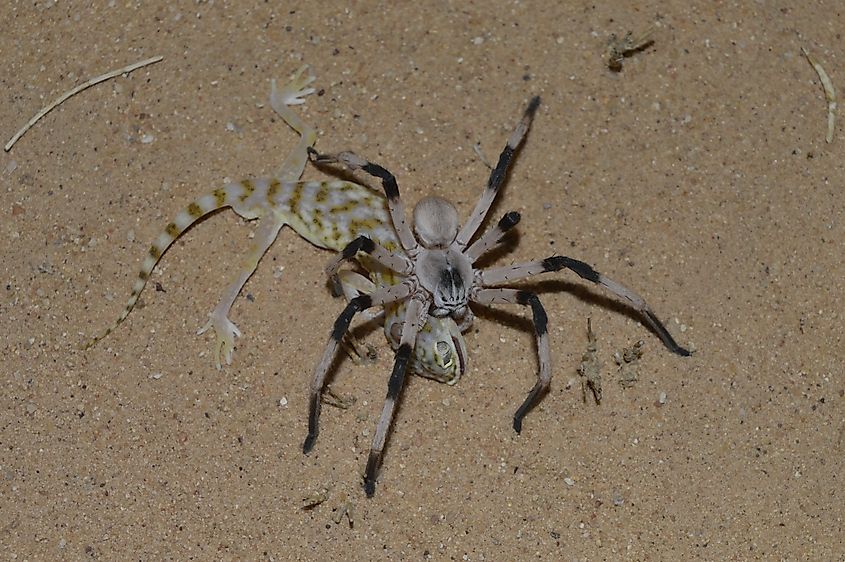
Cerbalus aravaensis: Biggest spider of the Middle East from Arava Valley preying on Stenodactylus doriae geckos.
Found in the sand dunes of Israel and Jordan, the Sand-dwelling Huntsman Spider (Cerbalus Aravaensis) is the smallest of the world's largest spiders, reaching 5.5 inches in leg span. Similar to the Giant Huntsman Spider and the Chaco Golden-knee Tarantula, males tend to have longer legs while females have larger bodies. The creatures are nocturnal and live underground. They have primarily gray to brown, flattened bodies, ideal for blending in with the landscape and slipping between rocks and tight places. The Sand-dwelling Huntsman Spider feeds on a variety of insects, lizards, and frogs and generally lives for two years or more.
Awe-Inspiring Arachnids: The Largest Spiders Revealed
The title of "World's Largest Spider" may belong to two different species: either the Goliath Bird-eating Tarantula or the Giant Huntsman Spider, each boasting their own weight and leg span. Regardless, the eleven largest spiders are some of the world's most interesting creatures. While some of them are venomous, they are not likely to be crawling around your home. Still, with knowledge of where they reside, arachnophobes are best to plan any upcoming vacations accordingly!











